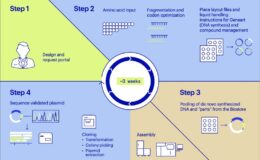
Genealogy software market leader Ancestry has added a new DNA-based feature to its family-tree software.
ThruLines uses both public or private-searchable DNA results in its database to illustrate how you and your DNA matches might be related through common ancestors.
It will suggest potential ancestors – which will appear with a dashed outline around their names – who are not in your family tree, but appear in the trees of other Ancestry members who may share a common ancestor with you.
Your DNA matches are labelled with how many centimorgans (cM) of DNA you share and the relationships that are possible between you.
First, you must have signed up and taken the Ancestry DNA test, which costs £79 or US$99. Check out the latest best deals for DNA test kits and family-history services.
Once set up, it typically takes a couple of days for ThruLines to find common ancestors you share with your DNA matches after you link a public or private searchable tree that is at least three to four generations deep to your AncestryDNA test.


While ThruLines doesn’t validate relationships with DNA matches, it makes it easier to see relevant source information, such as public or private searchable family trees, historical records and shared DNA, to help you reach your own conclusions about how you might be connected to your DNA matches.
If a potential ancestor does not support what you know about your family’s history, you may contact the family tree owner associated with that person to correct any errors or make changes. You may also want to review relevant records and family trees to determine if there actually is a relationship.
If that potential ancestor is based on information in a private-searchable tree, he or she will show as “Private.” Ancestry subscribers can contact the owner of the private-searchable tree to learn more about that potential ancestor.
DNA matches who don’t have public or private searchable trees linked to their AncestryDNA test won’t show up in ThruLines.
Ancestry has also added another new non-DNA feature to its family tree site, letting users apply new labels known as MyTreeTags.
These tags are applied to people in your family tree to indicate, for example, whether your research is confirmed or unverified. You can also record personal details such as “never married” or “blacksmith” with customisable MyTreeTags and use them as filters to organise your tree.
Note: We may earn a commission when you buy through links on our site, at no extra cost to you. This doesn’t affect our editorial independence. Learn more.














